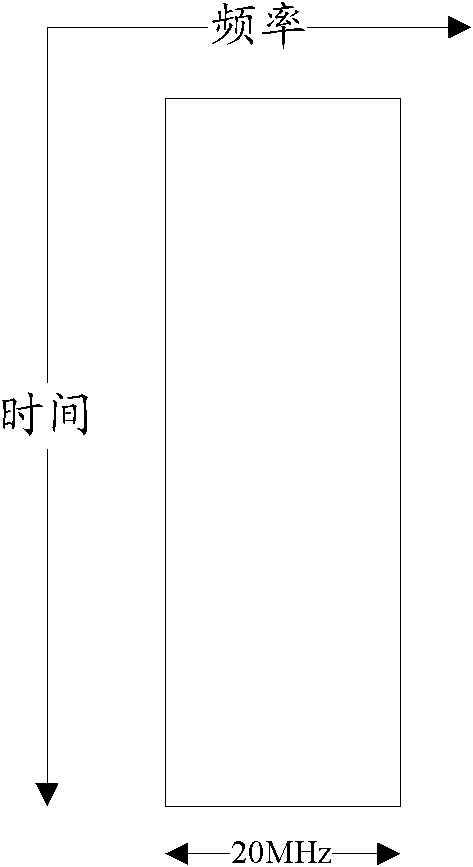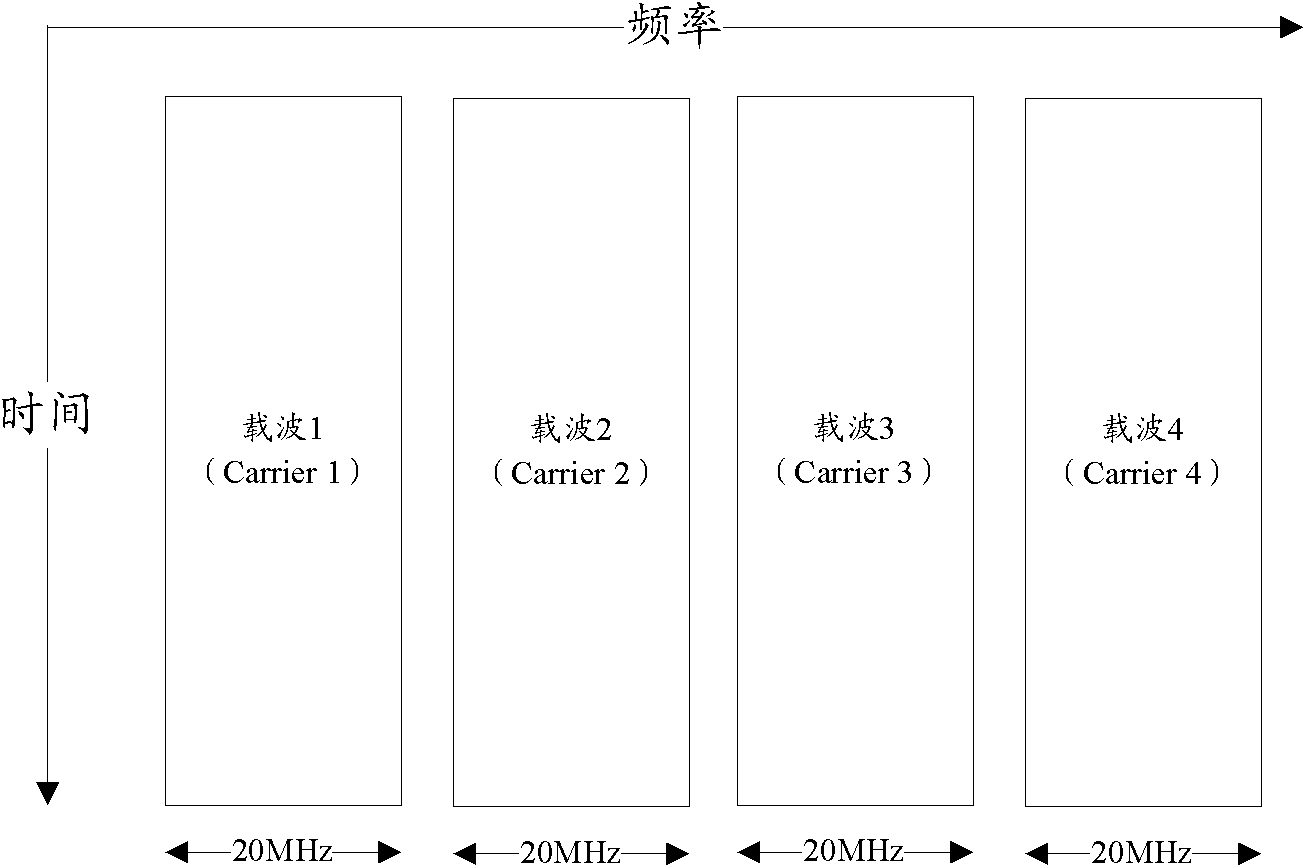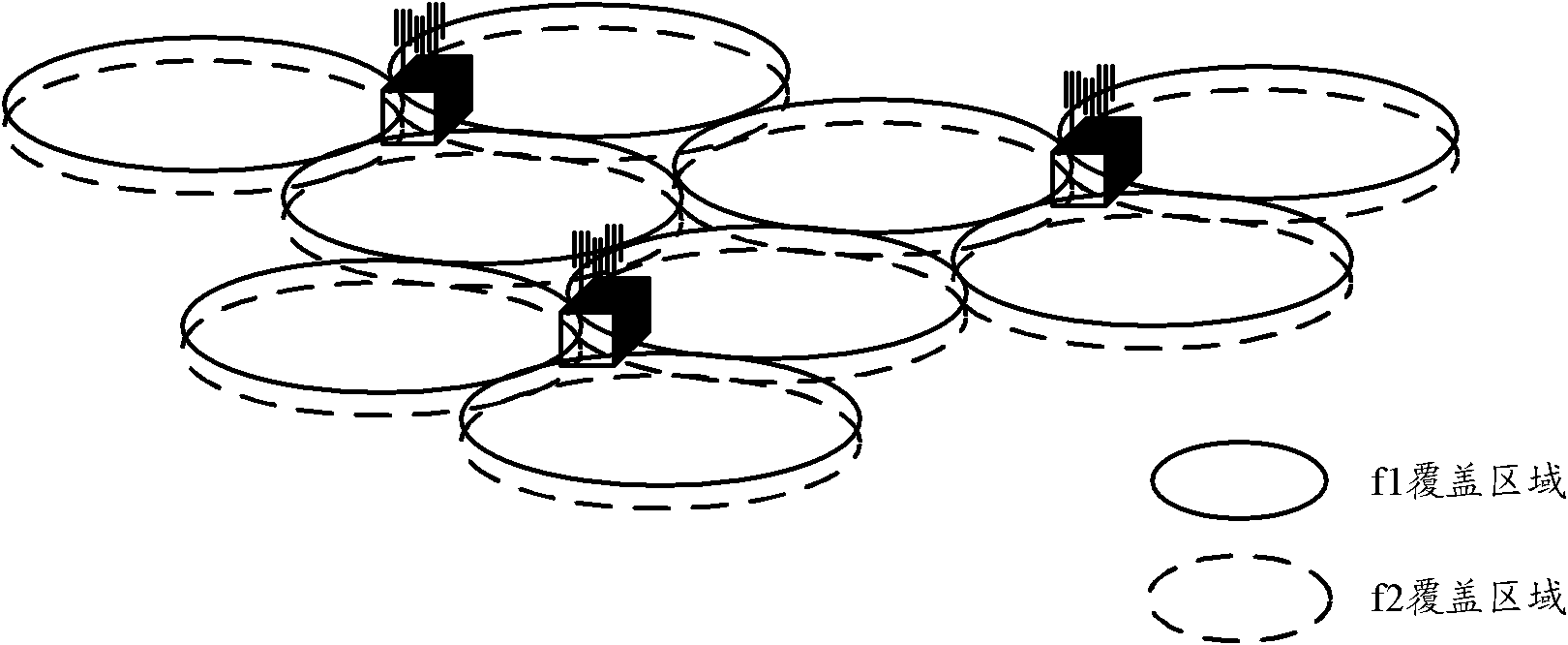Information notification and timing advance (TA) obtaining method, system and equipment thereof
A technology of timing advance and information notification, applied in the fields of information notification and timing advance acquisition, can solve the problem of not being able to know whether the uplink TA of a cell is the same or not.
- Summary
- Abstract
- Description
- Claims
- Application Information
AI Technical Summary
Problems solved by technology
Method used
Image
Examples
Embodiment 1
[0099] In this embodiment, the TA of the newly added cell is different from that of all the current serving cells, and the RRC message is used to notify the information that the uplink TA is different; the details are as follows:
[0100] The UE has aggregated cell 1 and cell 2 for data transmission, and the TAs of the two cells are the same, and cell 1 is the primary cell. Due to the increase or movement of the traffic of the UE, the base station decides to add another aggregated cell, cell 3, for the UE. Since the TA of cell 3 is different from that of cell 1 and cell 2 (probably because cell 3 has passed through RRH or repeater), when configuring cell 3 for UE, the base station notifies UE through RRC dedicated message: the TA of cell 3 and the primary cell The TAs are different; the UE may also be triggered to perform random access on the cell 3 at the same time or later, so that the UE obtains the TA of the cell 3 and completes the uplink synchronization of the cell 3 . ...
Embodiment 2
[0106] In this embodiment, the newly added cell has the same TA as some current serving cells, and the RRC message is used to notify the newly added cell to have the same TA as the current serving cell; details are as follows:
[0107] The UE has aggregated cell 1, cell 2 and cell 3, where cell 1 is the primary cell, cells 1 and 2 have the same TA (called TA1), and cell 3 has another TA (called TA2). At this time, due to the increase or movement of the traffic of the UE, the base station decides to add another aggregated cell (cell 4 ) for the UE. Since the TA of cell 4 is the same as that of cell 1 and cell 2, but different from that of cell 3, when configuring cell 4 for the UE, the base station notifies the UE through an RRC dedicated message that the TA of cell 4 is the same as that of the primary cell. To perform random access in cell 4, only need to use TA1 of the primary cell to perform uplink synchronization directly. The base station can adopt the CHIOCE branch 1 in ...
Embodiment 3
[0110] In this embodiment, system information is used to notify whether the TA of other cells aggregated with the current cell is the same as the TA of the current cell, as follows:
[0111] The base station broadcasts whether the TA of other cells aggregated with the current cell is the same as the current cell in the system information of the cell under its jurisdiction. For example, in the system information of the cell 1, it is included that the TAs of the cell 2 and the cell 4 are the same as those of the cell 1, and the TAs of the cell 3 and the cell 1 are different. Assuming that the UE works in Cell 1 first, the base station adds an aggregated Cell 2 (Cell 1 is the primary cell) for the UE due to increased traffic. Since the UE has learned that the TA of the cell 2 is the same as that of the cell 1 through the system information of the cell 1, when the carrier aggregation transmission of the cell 2 is added, the UE directly uses the TA of the cell 1 to perform the upli...
PUM
 Login to View More
Login to View More Abstract
Description
Claims
Application Information
 Login to View More
Login to View More - R&D
- Intellectual Property
- Life Sciences
- Materials
- Tech Scout
- Unparalleled Data Quality
- Higher Quality Content
- 60% Fewer Hallucinations
Browse by: Latest US Patents, China's latest patents, Technical Efficacy Thesaurus, Application Domain, Technology Topic, Popular Technical Reports.
© 2025 PatSnap. All rights reserved.Legal|Privacy policy|Modern Slavery Act Transparency Statement|Sitemap|About US| Contact US: help@patsnap.com



